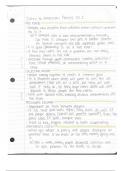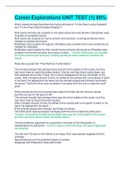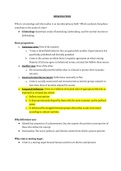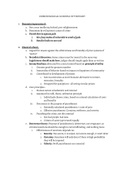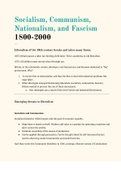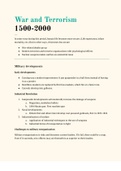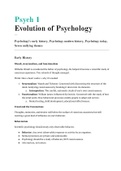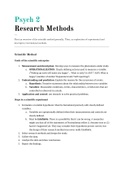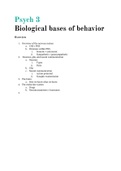College of William and Mary
Latest uploads at College of William and Mary. Looking for notes at College of William and Mary? We have lots of notes, study guides and study notes available for your school.
-
81
- 0
-
4
All courses for College of William and Mary
Latest notes & summaries College of William and Mary
Midterm preparation notes, summarized from class notes.
Career Explorations UNIT TEST (1) 80%. Which statement best describes the rhyme schemes of "To My Dear Loving Husband" and "To the King's Most Excellent Majesty"? Both poets primarily use couplets to link ideas about love and devotion; Bradstreet uses inversion to complete rhymes. Both poets use couplets for rhyme scheme and structure, inverting sentences when needed to maintain the rhyme. Bradstreet uses couplets throughout; Wheatley uses couplets and inverts sentences as needed fo...
Clear and detailed notes for INTRO TO CRIMINOLOGY, part ONE, including: Cesare Lombroso, trait theory, genetics, Brunner, Polygenetic scores, neuroscience, prefrontal cortex theory, Raine, Psychosocial trait theory, intelligence,Hirchi and Hindeland, Mears and Cochran, arousal theory, personality, psychopathy, development and life course theory, Moffit, Laub and Sampson, Giordano, violent crime, multiple murder, terrorism, and white collar crimes.
Clear and detailed notes for INTRO TO CRIMINOLOGY, part ONE, including: consensus, conflict, and interactionist views of criminology, definition of criminology, male in se vs male probita, felonies vs misdemeanors, acts re vs mens rea, criminology research methods, validity and reliability, experiments, surveys, participant observation, case studies, unobtrusive methods, UCR crime data, crime rate, clearance rate, NIBRS, types of criminal offenders, victimology, victim participation theory, life...
Clear and detailed notes for INTRO TO CRIMINOLOGY, part ONE, including: Criminology theory/ schools of thought, the classical school, Bentham, Deterence theory, Stafford and Warr, positivism, atavism, post-positivism, social disorganization theory, natural ecology,systemic model of social disorganization, anomie/strain theory, Merton, Cohen, Cloward and Ohlin, Mesner and Rosenfield, Agnew,Differential association, social learning theory, techniques of neutralization, labelling, and MORE.
A clear, detailed, and comprehensive set of notes on the topic of Socialism, Communism, Nationalism, and Fascism from 1800-2000 for the course HIST192: Global History Since 1500, including threats to liberalism after the French Revolution, the rise of Nazism, Conservatism, radical and racial ideologies, WW1, Russian Communism, the 1917 Revolution, Stalin, Italy, Japan, and Germany Fascism, Chinese Communism, and the Fall of Communism.
A clear, detailed, and comprehensive set of notes on the topic of war and terrorism for the course HIST192: Global History Since 1500, including military developments, the industrial revolution, terrorism, and nuclear weapons.
A clear, detailed, and comprehensive set of notes on the evolution of psychology for the course PSYCH202: Introduction to Psychology as a Natural Science, including Wilhelm Wundt, structuralism, functionalism, Freud, Behaviorism, Skinner, Humanism, Rogers, Maslow, Cognition and Physiology, Evolutionary and Positive Psychology, and seven unifying themes of psychology.
A clear, detailed, and comprehensive set of notes on the research methods of psychology for the course PSYCH202: Introduction to Psychology as a Natural Science, including the scientific method, operationalization, hypotheses and variables, empirical research, independent and dependent variables, experimental and control groups, extreneous variables, descriptive and correlation research, ethical principles
A clear, detailed, and comprehensive set of notes on the biological bases of behavior for the course PSYCH202: Introduction to Psychology as a Natural Science, including the nervous system, neurons, glia, neural communication, the brain, and the endocrine system.

